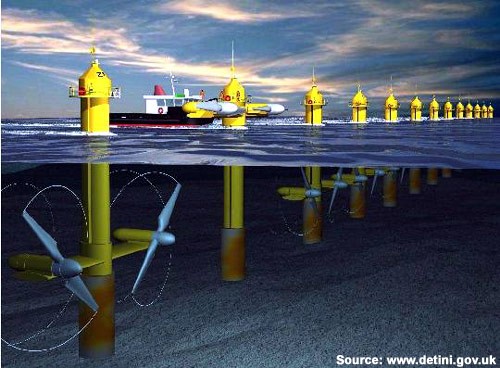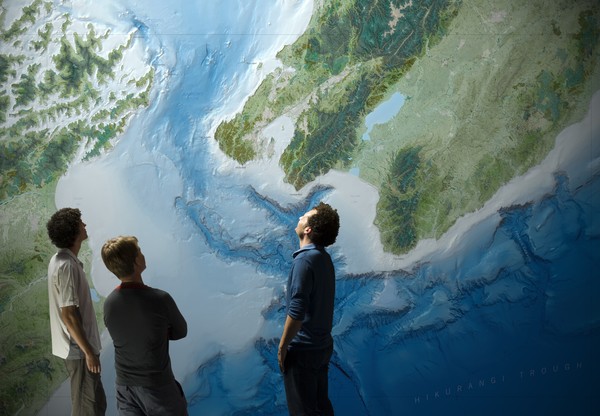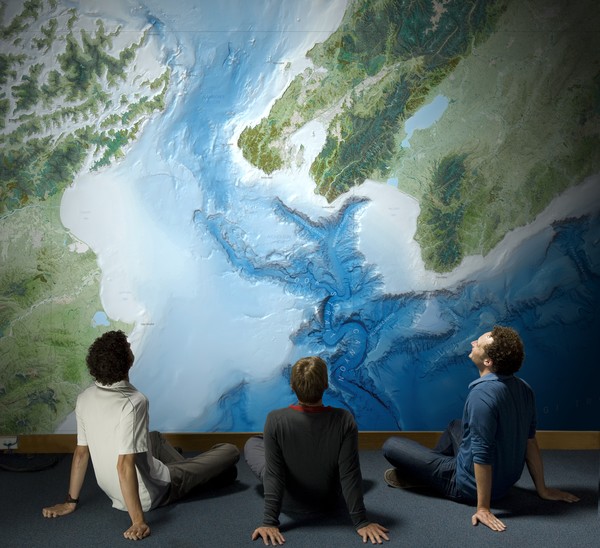NIWA's energy projects are turning the tide



Harnessing tidal power for electricity generation will be a landmark in broadening New Zealand’s already impressive renewable energy portfolio, a marine energy conference is to be told.
“In the drive to replace non-renewable fossil fuels with renewable energy sources, marine energy is emerging as a viable option in the near-future and a real complement to wind, geothermal and hydro resources,” says NIWA oceanographer, Dr Craig Stevens.
Dr Stevens is a presenter at the AWATEA conference to be held in Wellington next week 19/20th April. It will include a report on the state of marine energy in New Zealand and includes keynote speakers from the United States, the United Kingdom among many international delegates.
http://www.youtube.com/watch?v=9E8DWf-br30
“High speed flows in the coastal ocean are very complicated and not surprisingly carry vast amounts of energy. We are starting with the basics, looking at the oceanography and getting a handle on variability. This will provide us with real knowledge when it comes to both picking the best sites for energy extraction and understanding how the environment will be impacted,” says Dr Stevens.
Questions around the environmental impact of new electricity generation have maintained a high profile with the public. In order to facilitate environmental consenting, Dr Stevens is investigating the impact of tidal turbines on coastal waters.
This is made difficult because there are only a handful of tidal turbines operating in the world and no tidal turbine farms at all. This is likely to change rapidly in the next five years – but for now we have very little to go on in terms of real data on their effect and operation, says Dr Stevens.
New Zealand’s first marine energy tidal stream turbine development is likely to be in the conditionally approved Kaipara Harbour Crest Energy project with an experimental device consented for Cook Strait (Neptune Energy) and a project looking at the fast flows in Tory Channel (Energy Pacifica).
Stevens believes “we could see a few turbines in Cook Strait within 2-5 years, and building on this experience within ten years our first turbine farm should be operational providing predictable and relatively unobtrusive power that is again relatively low in carbon emissions.”
The aim of Stevens’ group’s work is to gain a stronger understanding of tidal stream energy issues like turbulence, weather, waves, and climate. The group is building on experience with assessing the environmental impact of aquaculture developments. Stevens believes good quality impact assessments require an understanding of the underpinning physical science. “We are bringing this knowledge to the point where the economic benefits are clear and the integration of marine energy into the New Zealand energy systems can become reality.”
This research is funded by The Foundation for Research Science and Technology.
BACKGROUND
Cook Strait
Cook Strait is one of the great straits of the world. Although changes in tidal height are modest, it turns out they are high on one side of the side of the strait when they are low on the other – accelerating flows back and forth.
Some places are better suited to tidal energy extraction than others. Stevens is studying the ‘Karori Rip’ near Cape Terawhiti, off the south coast of Wellington. It’s the strongest tidal flow in Cook Strait. Stevens’ group is also looking at Tory Channel.
“The amount of energy in the Cook Strait is huge,” says Stevens.“There’s something of a naive view that this energy happily flows along in a regular ordered fashion – its actually a maelstrom! Until our efforts no one had measured the levels of turbulence in the Cook Strait, and that’s what we have initially focussed on. It’s phenomenally energetic. Coupled with this, waves can be enormous – and steep. There’s no point getting excited about this energy unless you have technology that’s robust enough to deal with it.”
Cook Strait contains important routes for tourism, transport, and fishing ecosystems. It has great cultural significance to many people and is heavily used by marine mammals. All of these concerns have to be factored in to understanding the true impact and effect of such developments. And in turn these have to be weighed against security of energy supply and the carbon footprint of that supply.
How they are assessing tidal energy
Through computer modelling and field measurements, Stevens is assessing whether devices can be deployed to maximise extraction.
Dr Stevens is half way through a three year project, looking at tidal turbulence and how individual devices and arrays of devices interact with flow and turbulence. One of the team members Tim Divett says “A tidal turbine is likely to be comparable to a single wind turbine, but industry doesn’t put in a single wind turbine, it puts in arrays of 20, 40 or 100 turbines – tidal developments will likely be the same.” Tim Divett is in the early stages of a PhD supported by a prestigious scholarship from Todd Energy.
“There may be an ideal spacing whereby the flow is only reduced by a certain percentage,” says Divett. If too many turbines are placed in a particular area, the water flow is reduced so much that the turbines can’t function effectively.
“Designing for the ideal spacing of turbines is done by generating a model and map of where the resource is, and what the likely change would be once you start extracting. Then you factor in the type of turbine that you’d need to extract that: big, small, rotating. Then you have to factor in the issues like distance to shore and the electricity grid,” says Divett.
Turbulence
Turbulence is one of the most complex phenomena known to science. “One way of thinking about it is as if the ocean is built up of a whole bunch of watery donuts all spinning in different directions, with different sizes at different speeds. This all sounds fine but if you recall every cubic meter weighs a tonne then that’s a phenomenal amount of energy and it’s not all happily chugging along on a straight path. If you don’t understand the doughnuts then you can’t understand the rates at which material and energy is transported and dissipated!”
The impacts of extraction need to be looked at carefully and really require test devices to fully understand what the impacts are likely to be. Not only will the turbine arrays affect flow but there will be follow on effects on sedimentation and ecosystems in general.
The future
“A moderate sized farm would be possible in Cook Strait initially, if we could meet some of the challenges getting the devices in there,” says Stevens. “The Karori Rip in Cook Strait provides some serious challenges for technology - the high flows will be very variable - turbines have to be flexible in how they operate.”
Stevens would like to be able to say in a few years time that he contributed to and establishing a revolutionary source of energy for New Zealand. “In 2-5 years developers will have a couple of turbines in, and building on this experience within ten years our first turbine farm should be operational providing relatively predictable and relatively unobtrusive power that is again relatively low in carbon emissions,” he says.
It may not be a limitless and utopian source of energy, because there is always a cost for putting these things in. “It has to come hand-in-hand with society being far more efficient with the energy it does use – we simply can’t afford to waste it,” says Stevens.
